 Your new post is loading...
 Your new post is loading...
At this point, there’s no shortage of mobile products created by newspapers. Staffs are developing general news apps, sure, but in many cases they’re also tacking on a host of more niche apps. They’re also being more thoughtful about the types of journalistic content suited for mobile consumption and the extent to which clean presentations make this content sing. The apps that resonate with me most play up the functionality of the device, are useful to readers, and give information to help citizens lead better lives on the go. Newspapers, I believe, are learning that what works on a smartphone is different than what works on a tablet. What’s a helpful app in Los Angeles is different than what passes for a helpful app in Cleveland. And a newspaper staff that understands their community is better positioned than most to make these sorts of product adjustments to suit the market. Having said that, here are my picks for best newspaper apps. I listed my selections by newspaper and then explained the particular app or apps by that publication that stand out. Some have excelled in apps that are geared toward more lifestyle topics while others have done well with more traditional news coverage. All the apps are free of charge (or free for a limited time), which goes against the business model of most papers who are starting to charge for apps of their news content....
Social media and journalism are back in the ring this week. They’re both pretty strong contenders, but not without their weaknesses. In the immortal words of Paulie Pennino, let’s blow these punch-outs. In this corner: Journalism As the underdogs trying to maintain a presence and a living wage, we all know journalists have the power of story-telling and, hopefully, credibility, when news breaks. This Nieman Lab post illustrates the timeline of breaking the Boston bombing on Monday. It shows social media users were able to catch events up to the minute, but it’s only when Reuters retweets it that it becomes News. That’s all because of context. Journalism takes its hardest blows when it forgets that its mission is to provide context. To keep up with social media, journos have fallen prey to the allure of being first. Cable news outlets broadcast, and then tweeted, information about the ongoing investigation and hunt for the bomber without verifying information. Instead of relying on their credibility, their only other strength, media outlets engaged in a strange feedback loo....
...At their core, Facebook, Tumblr, and Twitter are sharing networks, not publishing companies. They act as platforms for other people’s content, which can be spread rapidly and massively among their communities. A consequence of being walled gardens that restricts this sharing activity within their own properties, however, is that they give up the right to decide when and how that content breaks free into the wider public discourse. Even though it had success with its partnerships program at placing stories into other forums, Storyboard’s stories always had the whiff of marketing, or what is these days being described as “native advertising.” As we now know, that ultimately did not work out for Tumblr. Going by Fletcher’s comments, perhaps Facebook Stories will meet a similar fate....
The revival of long form writing online... The last few months has seen this trend change and have seen the revival of long form writing online. Long form content journalism and in-depth storytelling online are making a comeback. While most articles are still short and quick to read, more and more blogs are publishing long-form features of 2,000+ words, which include photos and videos and need a lot of time invested from the reader to go through it. There seems to be a growing appetite from the web audience for these kind of features as proved by the popularity and social media spread of these. A recent statistical study on what makes online content go viral has found that long form articles are shared far more often than shorter articles. Word count of a post seems very closely related to the number of shares. Just look at the success of http://longreads.com/, http://longform.org/, and social media hashtags like #longreads and #longform. Here are some very successful examples of long form articles: Michael Jordan Has Not Left The Building feature on ESPN, beautiful Snow Fall in the New York Times and several profiles on the Forbes including this one of Sean Parker....
Content and commerce have always had a symbiotic relationship that many traditional content providers tried to separate. The wall between editorial and business, otherwise known as the separation of church and state, is and always has contained back doors and windows in which compromises are made. The slow adoption of all that the digital revolution has to offer – curation, aggregation, social, and automation – has also hobbled many traditional content providers. Depressed revenues, layoffs and shrinking bully pulpits are the results of an industry that doesn’t quite know how to monetize content beyond selling advertising space. Today’s successful digital companies know to blend content and commerce so that the content is compelling and, frankly, still sells stuff....
Alternative weekly colossus Boston Phoenix cracked and fell this week, ceasing publication after 47 years. Once one of the leading alt-weeklies in the nation, the dead paper leaves behind $1.2 million in debt and roughly $500,000 in assets. ...The advertising shift from newsprint to Web is mirrored by a cultural shift. In my mind, the alt-weekly remains the perfect boredom-alleviation device. Waiting for a subway train? Pull one from your bag and it will entertain you. Your girlfriend is late for your date? The paper will keep you occupied. That beer and bag of nuts not distracting from life’s troubles as you mope on a barstool? The alt-weekly saves the day again. But even a human fossil must concede that the smartphone trumps the alt-weekly as a boredom killer. How does a wedge of newsprint compete with an affordable messaging device that ferries games, social media apps, calendars, news, feature films, scores, coupons and a library’s worth of music and reading material? Ask a young person his opinion and he’ll tell you that nothing says “geezer” like a newspaper, be it daily or alt-weekly. What’s changed, and what probably convinced the Phoenix to exit, is that the papers are no longer a 30 percent (or higher) margin business, and that lost business is not returning. Publishers who hope to survive will have to content themselves with 10 percent margins. They will have to work harder to maintain advertising categories where they still have a comparative advertising advantage, such as food and restaurants, which usually require a face-to-face meeting between an ad representative and an owner to make a sale. It’s a cliché, but I’ll toss it out there anyway: Every newspaper and website needs to compete in the events business. The smarter papers are already there, and if they’re lucky they’ll hit the jackpot the Austin Chronicle has with its decades-old SXSW business. And it doesn’t require much insight to urge alt-weekly publishers to continue building out their Web components....
If the newspaper industry had theme music in 2013, it might use “Been down so long it looks like up to me,” the much-recycled line from a 1920s blues song. For the first time since the deep recession that began in 2007, newspaper organizations have grounds for a modicum of optimism... Companies have started to experiment in a big way with a variety of new revenue streams and major organizational changes. Some of the bright opportunities – such as offering social marketing services to local businesses – are ventures too new to be measured yet industry-wide. They show signs of stabilizing revenue.... Even halting improvement in the general economy helps the industry. The double whammy of cyclical ad losses on top of secular shift to new media has considerably eased from the worst of the recession from 2007 to 2010. Auto advertising has come back, and some markets, like Miami, are beginning to see recovery in real estate and employment ads as well. All those positives, however, are for the time being mostly promise rather than performance. The most basic indicators have not turned around. The industry is little more than half the size it once was. Considerable dangers persist... So the industry entered 2013 with some positive signs but still dealing with difficult economic realities. The two biggest newspaper developments of the last year – digital paywalls and reduced print frequency – capture that odd mix of expansion and contraction now typical within the industry....
The ticking time bomb that has defined the intersection of print and digital publishing went off over the past few weeks. It’s not the fault of any executive, technology or business model. It’s simply the beginning of a new cycle of magazine content and delivery. It you love magazines, it’s all about discovery and great value right now. If you don’t like magazines, this explosion increases the chances that you just might change your mind. Think about this: We’re coming off a week in which one of the world’s biggest publishing companies (Time Inc.) tried to sell its library to another of the world’s biggest publishing companies (Meredith). The deal fell apart. And in the same week, another global giant (News Corp) announced that its newly spun-off publishing division will get a $2.5 billion cash infusion, some of which will spawn a new WSJ.Money print magazine, and some of which will go to digital newspaper publishing. This mass change, growth, and implosion is the reality for publishers over the next few years. It’s print vs. digital, and a game of survival of the fittest. Behind the scenes, some publishing executives are clinging to the vision that print will still be the best business magazine model for the right content and the right audience. And then others are seeing the dramatic changes with the long-term view that digital models will win out. This is happening faster than most people think....
I will never forget Bob Feit, the mad Hungarian who ran the newsroom I landed in right after college. When the news really excited him, he would pound his fist on the rim (a horseshoe-shaped copy desk), then jump on his desk and wave his arms with utter joy. “I love the news,” he would yell. The slot man, a Brit who wolfed down onion sandwiches for lunch, would express mild amusement as he continued to move copy to Carmine, a.k.a. Ace, the gruff-on-the-outside, sweet-on-the-inside teletype operator. I also remember Feit (no one ever called him Bob) because he taught me to write concisely. He would sit to my right, cut my two-sentence news briefs in half, then tell me to fill them up with facts. When I finished, he would do it again. To this day, I write my posts with Feit in mind, knowing he’d easily find words to cut....
...The media loves to attach labels to trends. When one catches on, the rush begins. Native advertising (the buzzword of choice right now), social advertising, content marketing and sponsor curation all revolve around the notion of brands as publishers. Everyone’s jockeying for position, FORBES included. Marketers want a bigger voice. The media business needs revenue. The digital world demands change. So, what’s required for this new form of marketing — and for journalism to continue to flourish? Ah, here’s where the fun begins. Buzzfeed talks about viral content. The Huffington Post is into “aligning content and paid advertising strategies.”The Atlantic uses “Sponsor Content Presented By (pick the advertiser). Gawker’s done something similar (it’s actually now talking about a commerce play). As for us, I often talk about brand journalism. BrandVoice is based on the philosophical belief that marketers, with deep understanding of their industries, can offer smart insights, too. In most traditional media companies, that’s a tough sell. Journalists can barely swallow the advertorial — it must be placed in the print or digital equivalent of Siberia. The fact is is, with the click of a mouse or the touch of a screen, the audience can check a marketer’s veracity as easily as it can a journalist’s....
Tech site develops predictive platform to monetize traffic surges In an analytics-obsessed Web climate, everyone is chasing the big story. The problem is, more often than not, big breakout traffic scoops yield attention, eyeballs and notoriety, but very few dollars. Last month, Deadspin broke the story on the Manti Te’o girlfriend hoax, netting the site nearly 4 million pageviews. But as Gawker Media mentioned publicly following the story, the company had no technical solution in place to monetize an unforeseen surge in traffic. Gawker is not alone. Web publishers have struggled across the board with this, which is why Ars Technica has been hard at work with what could be a viable solution. At Ars Technica, Condé Nast’s 15-year-old high-brow tech site, Ken Fisher and his small in-house team were lamenting the traffic conundrum when they decided to build a real-time dashboard geared toward examining pageviews with a predictive eye toward recently posted articles that are poised to trend. "Within two days we found it was working really well," explained Ars editor in chief Fisher. “We were identifying within an hour stories that would go on to do 900,000 views. And these were not pieces you’d hear by title and think, ‘That’s going to be killer.’ One was titled, Quantum Networks May Be More Realistic Than We Thought.”...
While the Knight Lab spent last week looking back at 2012, what we're really excited about is 2013 and beyond. Nieman Journalism Lab has a whole serieson what to look for in 2013, from a not-so-shabby group of journalism and technology gurus -- Amy Webb, Matt Waite, Erin Kissane and our own Miranda Mulligan among them. At the Knight Lab, we saw glimpses of the future in many projects that launched this year....
A collaborative effort to figure out the future of journalism. A project of Harvard University. To close out 2012, we asked some of the smartest people we know to predict what 2013 will bring for the future of journalism. Here’s what they had to say.
|
The week of the Boston bombings has been a cascade of embarrassments for the news industry. On Wednesday, CNN falsely reported that arrests had been made. The New York Post, never known as a pillar of journalist ethics, sunk to a new low with a front-page photo on Thursday of two young men, captioned, “Feds seek these two pictured at Boston marathon.” The only hitch: These weren’t the suspects. One of them says he’s now afraid to leave his house. But should these media fails really surprise us? Those who have been paying attention know that media bosses have been in a race to the bottom for over a decade. As journalist Nate Thayer describes it, “Not only have all the editors and others responsible for ensuring balanced and accurate story, which was crucial to ensuring believable information, been eliminated in budget cutbacks, but the more overwhelming new reality is the age of instant in the new borderless digital information age.”
...You can access the app via the Web, but there’s also native incarnations for Android and iOS. To contribute content to GuardianWitness, you need to create an account, either using your existing Guardian credentials, or through your Facebook and Twitter details. The Guardian actually posts ‘assignments’, inviting users to post content based on themes – for example, when Britain experiences unseasonably bad weather. Editors set a range of assignments each week, covering news, sport, culture and life and style....
Every 30 seconds or so, an algorithm developed by Narrative Science produces a computer-written news story, Wired reports. The articles run on the websites of respected publishers like Forbes, as well as other Internet media powers (many of which are keeping their identities private). Niche news services hire Narrative Science to write updates for their subscribers, be they sports fans, small-cap investors, or fast-food franchise owners. And the articles don’t read like robots wrote them....
Outbrain and Taboola are paving the way in the content marketing space... These two leaders in the content marketing space or as I like to call it, AdSense for content, have a simple offering that you’ve probably seen but don’t even know about. Combined, they power the “other content you may like” next to every article on every big publication ranging from Time, Bloomberg, Rolling Stone, The New York Times, and more. Outbrain and Taboola only recently started going after the same deals. Outbrain is coming from the contextual text side, whereas Taboola comes from the videos-you-may-like side. They only recently built the other side of the offering that steps into the “others” territory. But this piece is not about comparing them to see who is better. Rather, it is about the space of content marketing, why it is the next big thing, and how you are missing out big time if you are not pushing your content into the marketplace. A little more about how the space works: you have two options as a content creator and blog/site owner. The first is to add a widget on your blog to host “other content you may like” and get paid to push people to good content. The second is to get your content pushed into the marketplace and have it appear on “other content you may like” for other outlets ranging from big to small sites. The first side you get paid, the second side you set an amount per click and a budget....
Given the speed of the news cycle and the time needed video news production, social media is "the first way we break news now," says Andrew Springer, Producer of Social Integration at ABC News, in this interview with Beet.TV at SXSW.
In reading the Pew Research Center's State of the News Media 2013 there were some interesting things in the sections on news magazines and digital that I thought I'd point out....
The grizzled vet and the digital native: Journalism has plenty of room for both to succeed. I spent eight years at AOL and I'll say this: I saw none of the great, all of the bad and some of the good. ... The blood sport during my AOL days was about the future of media companies — who would or wouldn’t survive the digital onslaught. Actually, it was much the same during my time at Newsweek in the 80s (who needed three newsweeklies in a broadcast world). Ditto when I joined The New York Times in the 70s (was the city big enough for both The Post and Daily News). Now, the social Web with its echo chamber turns up the volume daily — and makes it more personal, too. It’s far more about the fate of the individual journalist. That quickly gets down to the paycheck. Will there be one? How much? Who gets it — the “professional” or the pretender? Consumer demand for credible news and information is greater than ever. The problem is the 100-year-old model for producing it is forever broken. That’s why more attention must be paid to finding new ways to produce quality journalism — efficiently, at scale and at a price supported by mobile CPMs, which at best are 50% lower than desktop CPMs, which if you’re lucky come in two-thirds lower than print CPMs. In other words, a high-cost newsroom structure built for the print age will never work in a smartphone or tablet world. A few startups are experimenting with new models — Vox Media, Machinima, Bleacher Report and Storify are a few that I follow. Among traditional media companies, FORBES is the only one I know of charting a new course....
Des Moines-based Meredith, best known for Better Homes and Gardens, has discovered the secret to keeping magazines profitable... Meredith has profited from a few key strategies. They are experts at repurposing their content across multiple platforms (magazines, books, websites, mobile devices, tablets, etc.) and aggressively look beyond advertising and circulation for revenue. In print, they stay as far away from the news as possible. They are particularly successful at licensing their magazine titles’ names to major national businesses selling branded products; they also run their own marketing agency. Meredith hasn’t been immune to the forces battering the industry. But over the past decade, by strategically tweaking their portfolio, they’ve managed to maintain steady profits and reliable margins year after year in spite of the turbulence. (Lacy declined to comment.) In February, Meredith published one of its signature editorial products—a “bookazine” called Chicken Dinners. It was flush with ads, co-branded under the Better Homes and Gardens imprimatur, and sold with no expiration date. In theory, it could live on a newsstand—or a coffee table or a kitchen counter—for many months. “Chicken Dinners is Chicken Dinners whether you buy it in May, June, or July,” says Samir Husni, the director of the Magazine Innovation Center at the University of Mississippi. Some 88 years after Harold Ross launched The New Yorker with the pitch that it was “not edited for the old lady in Dubuque,” Iowa is turning into a surprising seat of power....
Polis, the journalism think-tank at the LSE, has published an in-depth report looking at the value of social media to journalism, specifically public service broadcasting, and it highlights how Twitter has come to dominate news. As the report puts it, Twitter plays a more important role in newsgathering than Facebook, which is much more about discussion and far less about breaking news. Lyse Doucet, the BBC’s Chief International Correspondent puts it this way: “There is no question, if you are not on Facebook and Twitter, you are not getting the full story”. More telling is the comment from Joanna Carr, editor of BBC Radio 4′s news programme ‘PM’, who said she “wouldn’t hire anybody who doesn’t know how to use Twitter”....
Newspapers will never be the same. But what happens to democracy if the Web business model can't fund journalism? ...The assumption is that there has to be a way to make profits doing digital journalism if journalists and owners simply wise up and get with the program. Over the past few years, many American newspapers have been purchased on the cheap by hedge funds—nearly a third of the twenty-five largest dailies are now so owned—the subtext being that these business geniuses can generate profits where dummkopf journalism industry types have failed. As John Paton, the journalist-cum-CEO for a newspaper company purchased by the Alden Global Capital hedge fund in 2011, put it: “We have had 15 years to figure out the web and, as an industry, we newspaper people are no good at it.” Apparently, neither are the hedge fund managers. David Carr wrote in July 2012 that “hedge funds, which thought they had bought in at the bottom, are scrambling for exits that don’t exist.”...
...As more people in any given newsroom are publishing to social platforms — andas more people bypass the homepage and instead use Twitter and Facebook as the entry point to any given news site — analytics companies see new opportunities to help media companies leverage real-time social data. Visual Revenue, a predictive analytics firm that focuses exclusively on media companies, is this morning rolling out a bundle of tools to help editors measure the effectiveness of social publishing in real time. “So, if you push a story right now on Nieman Lab, 40 clicks into it you might see 17 retweets, two favorites, some manual retweets and that’s all great, actually,” Visual Revenue CEO Dennis Mortensen told me. “But how do you really add all of it up?”...
For over a decade, traditional media companies have pointed to digital media as a promising source of revenue growth -- but as 2012 draws to an end, it’s clear that this promise is still more theoretical than real, while ad dollars continue to migrate away from traditional channels. This is particularly true for broadcast radio groups and newspaper publishers, whose 2012 results have (so far) offered little in the way of digital cheer....
|



 Your new post is loading...
Your new post is loading...





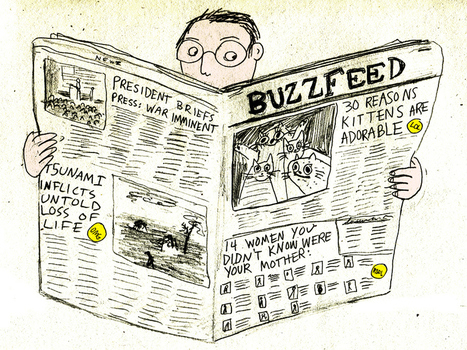


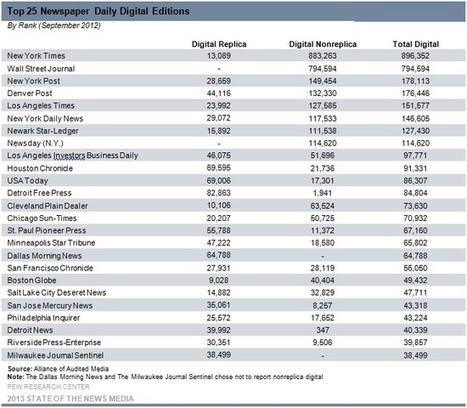


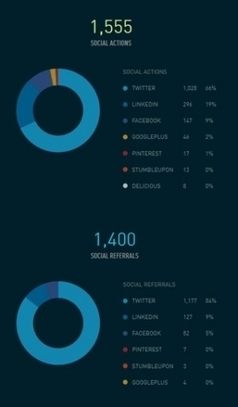






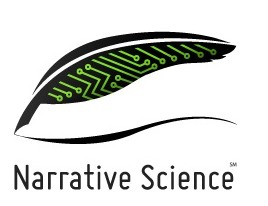
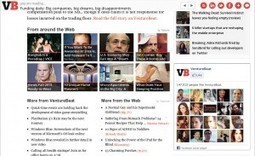










Useful overview of newspaper apps, many of interest to PR and business.